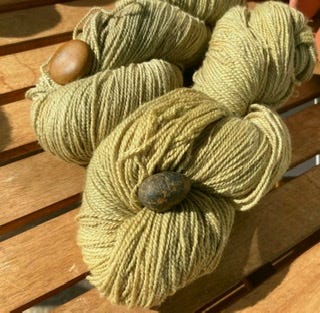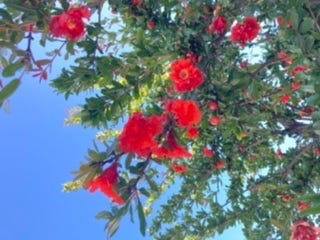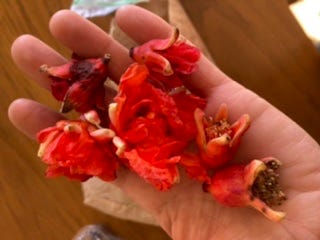Around the middle of April, I start looking out for pomegranates at the farmer’s market. They’ll be available for about six weeks or so in April and May so if I want to accumulate enough pomegranate rinds to dye a batch of yarn I need to buy some whenever I have the opportunity. It works out because I love to put pomegranate seeds on everything so getting to eat them nearly every day when they’re in season is just a bonus. I bring home as many as I can, take all the seeds out, and then carefully arrange the skins in a single layer to dry out. Drying them is maybe the hardest part: winters in Viña del Mar are cool, cloudy and humid and I don’t have a dehydrator so preventing mold can be tricky. The rinds can be used fresh as well but I need to dry them because I don’t use them right away.

By early June I usually can’t find pomegranates anymore so then I collect what I have and dye as much yarn as I can. Pomegranates are one of the best, most colorfast sources of yellow, and can also be used as a tannin for mordanting cellulose fibers. For these reasons, it’s also available as an extract from natural dye suppliers, but I prefer to work with only materials I can get locally as much as possible.
When modified with iron, they also make a nice olive green.
While April and May are the season for pomegranate fruits, I can also collect flowers from the numerous pomegranate trees around the city. These bloom in spring and can often get enough just picking up flowers that recently fell to the ground.
When I used flowers this year I got a slightly oranger color but I haven’t done experiments to compare flowers to fruit in a systematic way yet.
As I wrote this pomegranates are still in season, so I’m still collecting rinds for my 2022 dye bath. I should be able to share photos of it sometime next month! You can follow me on Instagram @neblina.wool or on the Making app @neblina to see more photos of what I’m dyeing.










